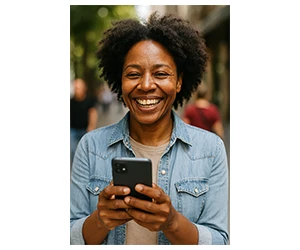In today’s interconnected world, staying in touch is more important than ever—for education, employment, and maintaining social relationships. Unfortunately, millions of people worldwide still lack access to essential tools like smartphones. Free smartphone distribution programs are working to bridge this gap, ensuring that everyone, regardless of financial situation, can benefit from digital connectivity.
Smartphones - More Than Just a Way to Chat
Throughout history, communication technology—from the printing press to the internet—has profoundly shaped society. Smartphones have become the latest essential communication tool, enabling people not only to talk and text but also to access educational resources, job opportunities, healthcare services, and emergency assistance at their fingertips.
However, the cost of smartphones remains a significant barrier for many, leaving them excluded from these benefits. To tackle this challenge, governments, nonprofit organizations, and private companies have established programs providing free smartphones to individuals in need. Their goal is to close the digital divide and democratize access to critical resources.
Why Free Smartphones Matter
Providing smartphones at no cost does more than offer a simple communication tool—it opens doors to transformative opportunities:
- Educational Access: Smartphones allow students and lifelong learners to access online courses, e-books, instructional videos, and virtual classrooms from anywhere, greatly enhancing educational outcomes.
- Job and Economic Opportunities: Smartphones enable individuals to search for jobs, apply online, participate in remote interviews, and explore online entrepreneurial opportunities such as e-commerce and mobile banking.
- Social Connections: With smartphones, users can maintain stronger social ties through social media, video calls, and messaging apps, reducing isolation and fostering a sense of community—even across significant distances.
- Emergency Preparedness: In crisis situations, smartphones provide rapid access to vital information, safety alerts, and emergency services, significantly enhancing personal and community safety.
Challenges Facing Free Smartphone Programs
Despite their benefits, free smartphone initiatives must overcome several key obstacles to ensure lasting impact:
- Financial Sustainability: These programs rely heavily on continuous funding, donations, or partnerships, making long-term sustainability a constant challenge, particularly in resource-limited regions.
- Digital Literacy Training: Many recipients need guidance and training to fully utilize smartphone technology, highlighting the need for ongoing digital education and support.
- Reliable Internet Access: Without affordable and stable internet connectivity, smartphones alone are insufficient to fully bridge the digital divide, especially in rural or underserved areas.
- Privacy and Security Concerns: Protecting user data and ensuring safe online environments are crucial, particularly for vulnerable populations unfamiliar with digital privacy practices.
Creating an Inclusive Digital Future
While distributing free smartphones is a powerful first step toward inclusivity, true digital empowerment requires further investment. Providing affordable internet access, comprehensive digital literacy training, and continued support are critical components in achieving meaningful digital inclusion.
By investing in these areas, communities can ensure that all individuals—regardless of their economic or geographic circumstances—can fully participate in and benefit from the digital age.
Conclusion - Bridging Divides, One Smartphone at a Time
Free smartphone distribution programs exemplify how technology can bridge divides, democratize communication, and empower individuals and communities. By ensuring universal access to smartphones and digital education, we create a more equitable and connected society.
As we work towards a future where everyone can communicate freely, share opportunities, and access essential resources, we're building a more inclusive, connected, and empowered world—one smartphone at a time.
